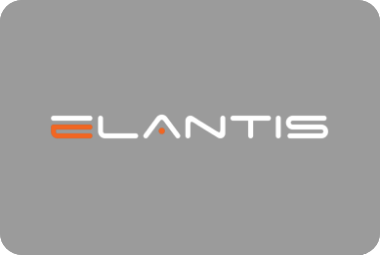Electronic document and records management systems (EDRMS) are a crucial component of modern business operations. They allow organizations to store, manage, and share documents electronically, which eliminates the need for paper-based processes and provides significant cost savings over time. Microsoft SharePoint Online is one such solution that can be used as an EDRMS by organizations of all sizes.
Implementing an EDRMS can improve security for confidential documents, encourage collaboration between different departments or users within the organization, enable easier document retrieval and archival processes, and reduce storage costs due to better document management practices. In this article, we explore how SharePoint Online can help you improve your efficiency in managing documents and records within your organization.
Using SharePoint Online as an EDRMS
Many businesses and government organizations are choosing to use SharePoint Online as an EDRMS because it is one of the best solutions for records and information management. For example, SharePoint Online has metadata support, integration with other systems like Office 365 applications, and Optical Character Recognition (OCR) capabilities to make scanned and PDF documents searchable. With SharePoint Online’s comprehensive features such as workflow automation tools and enterprise search options, it can meet any organization’s document management needs while providing scalability for growth.
Following are five benefits of utilizing an EDRMS for records and information management and specifically, with SharePoint Online.
Benefit #1: Increased Efficiency
The first benefit of an EDRMS is increased efficiency. This is because the system automates many of your organization’s records management processes, which can help reduce manual labour and improve productivity. For example, an EDRMS allows you to streamline your classification process by using automated tools that assist in identifying what type of information needs to be classified as a record or non-record item. It also provides retention scheduling capabilities so that you can determine how long each record should be kept based on its content and context. Finally, it gives users access to disposition rules that tell them how they should dispose of certain types of information when they no longer need them (e.g., shredding documents).
An important step in implementing an EDRMS is determining requirements for access control, retention schedules, and destruction policies. Depending on your requirements, this could include:
- Setting up user roles/permissions based on job function/department.
- Establishing a data retention policy that outlines how long certain types of records need to be kept before being deleted or disposed of.
- Implementing procedures for secure disposition of electronic records at the end of their life cycle.
Benefit #2: Improved Security and Compliance
An EDRMS can help you implement policies and controls to mitigate risks related to data breaches, unauthorized access, and data loss. A data breach occurs when sensitive information is exposed outside of its intended environment. This can occur due to hacking or malware attacks on your network or through human error when employees accidentally send confidential information via email or text message. In addition, an EDRMS can also be used as part of an organization’s compliance strategy for regulatory requirements such as HIPAA (Health Insurance Portability & Accountability Act).
When identifying which documents need to be stored within the EDRMS, current requirements should be considered, as well as those that may arise in the future. It is important to consider any document that could potentially have legal implications due to its sensitive nature or importance in business operations when making these decisions.
Benefit #3: Better Information Access and Retrieval
As you know, it’s important for organizations to be able to access and retrieve records quickly. The EDRMS can help with this by providing enhanced search capabilities that allow users to find what they need more easily. For example, if you have an EDRMS in place, your organization will be able to:
- Search across multiple systems at once—instead of having separate databases for each system (e.g., HR and accounting), you’ll be able to search all relevant data in one place.
- Find information faster—the EDRMS enables faster retrieval because it allows people (such as HR) who may not normally have access or expertise in certain areas access to the necessary information without having to go through another department first.
Many organizations choose to implement OCR and metadata capabilities to speed up search times and make it easier for users to find relevant information. OCR can be used to convert scanned images into text-based data which is then indexed by a metadata tool so it becomes easily searchable using keywords or other criteria specified by the organization.
Benefit #4: Cost Savings
One of the biggest benefits of an EDRMS is that it can help organizations save money by reducing paper usage, storage costs, and labour expenses.
For example:
- Paper is expensive to purchase and transport; it also takes up space in your office or facility. By using electronic records instead of paper ones, you’ll be able to save on both fronts.
- If your organization has a large volume of documents that need to be stored securely (such as medical records), then this will lead to high costs associated with renting or buying storage space for all those files—and then keeping track of them all! An EDRMS can help reduce these costs by digitizing documents so they can be easily accessed when needed while also freeing up physical space on site.
For organizations that already have Microsoft 365 licensing, using SharePoint Online as an EDRMS reduces the need for third-party tools and leverages your existing investment in Microsoft. SharePoint Online integrates with other Microsoft products like Office 365, OneDrive for Business, Power BI, and Viva so all your information is always available in one place.
Benefit #5: Improved Collaboration and Productivity
In addition to the other benefits mentioned above, an EDRMS can also help promote collaboration and teamwork among employees. When you have a centralized database of information, it is much easier for team members to share files with each other.
SharePoint Online provides you with a central location to store and manage your organization’s documents. You can create folders to organize your files, assign permissions by user or group, and search for specific content within your site.
In addition, version control in SharePoint Online allows you to track changes made during collaboration on documents in real-time so everyone knows who did what when it comes time for revisions or approvals. This feature also helps prevent mistakes from being made by allowing users access only when they need it (e.g., editing mode).
Another way that an EDRMS improves collaboration is by enabling remote access from anywhere at any time—making it easier for people who work outside the office to stay connected with their colleagues. In addition, these systems allow users to access all their files from any device they choose, whether it be a laptop, tablet, or smartphone, which further enhances productivity since there are no limitations on where they need to go to get things done!
Implementing SharePoint Online as an EDRMS
Now that you know the top five benefits of using an EDRMS for records and information management, it is time to consider implementing SharePoint Online as your organization’s EDRMS. The benefits of using SharePoint Online as an EDRMS are numerous and will help your organization save time and money while improving compliance with regulations.
SharePoint Online can be an ideal choice for organizations looking to implement a reliable and secure EDRMS. It offers features like version control, document sharing, tracking changes, search capabilities, metadata tagging, and more that make it easy for users to quickly find the information they need. Additionally, its integration with Office 365 applications makes it easy for teams to collaborate on documents in real-time while also providing robust security measures that help protect sensitive data from unauthorized access.
If you are interested in learning more about how an electronic document repository such as SharePoint Online can benefit your company, contact us today. The experienced team at Elantis is happy to answer any questions or concerns that may arise during this process.


























